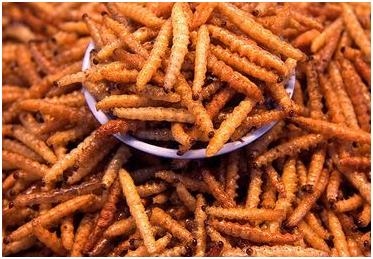CAN202代寫、代做MATLAB編程設計
時間:2024-04-26 來源: 作者: 我要糾錯
Page 1 of 3
CAN202 Analogue and Digital Communications I Coursework AY202324
Instructions:
1. 100 marks are available from this coursework (20% towards the total mark of CAN202)
2. Please submit one PDF file that contains your answers and CORRECT student ID.
3. Release date of the coursework: Friday 5
th April 2024.
4. Due date of the coursework: 23:59, Monday 6
th May 2024.
5. There are 11 questions in total. Answer ALL questions.
6. If asked, support your answer with figures. Make sure the figures are READABLE.
7. Append all necessary codes at the end of the to-be-submitted PDF or at the
corresponding answers.
8. No generative AI may be used when completing the coursework.
9. Learning outcome accessed: A, B, E.
10. The usual late-submission policy may apply (e.g., 5 marks deduction per working day).
The questions begin:
Figure 1 shows a periodic triangular wave 𝑠(𝑡), where the period is 𝑇 seconds.
Figure 1 A periodic triangular wave
Q1 Show sufficient steps to verify that a Fourier series representation of 𝑠(𝑡) in Figure 1 is
𝑠(𝑡) = ∑ 𝐶𝑛𝑒
𝑗2𝜋𝑛𝑡
𝑇
∞
𝑛=−∞
,
where 𝐶0 = 0 and 𝐶𝑛 =
2𝐴(𝑒
−𝑗𝜋𝑛−1)
𝜋2𝑛2
. (Hint: It may be easier to find the Fourier series
representation of 𝑑𝑠(𝑡)
𝑑𝑡
= ∑ 𝐵𝑛𝑒
𝑗2𝜋𝑛𝑡
∞ 𝑇 𝑛=−∞ and then find 𝐶𝑛 =
𝑇
𝑗2𝜋𝑛
𝐵𝑛 , where the latter
comes from a property of Fourier series that links the Fourier series coefficients
between a periodic signal and its integration) (10 marks)
Q2 Rewrite the Fourier series of 𝑠(𝑡) in the following form, i.e.,
𝑠(𝑡) = ∑ 𝐷𝑛 cos (
2𝜋𝑛𝑡
𝑇
+ 𝜃𝑛) ,
∞
𝑛=0
where you need to determine 𝐷𝑛 and 𝜃𝑛. (5 marks)
Then, suppose there is a bandlimited modulating signal 𝑚(𝑡) whose bandwidth is 0.2
𝑇
Hz.
Plot the frequency spectrum of 𝑚(𝑡)𝑠(𝑡). You may assume that the frequency spectrum
of 𝑚(𝑡) has the shape in Figure 2. (10 marks)
Page 2 of 3
Figure 2 An illustration of the frequency spectrum of 𝑚(𝑡)
Q3 We can generate a double-sideband suppressed carrier amplitude modulated (DSB-SC
AM) signal based on 𝑚(𝑡) × 𝑠(𝑡) and an appropriate bandpass filter (BPF), where the
carrier frequency is 𝑇
−1 Hz. Draw a diagram that realizes such a DSB-SC AM scheme,
where the functions of all components in the diagram must be specified. (5 marks)
In the second part of the assignment, we will scramble the frequency components of a piece
of soundtrack that somehow disguise the sound, and then we descramble and restore the
soundtrack. We will use the soundtrack in “handel.mat”. By typing the command “load
handel” in MATLAB, you will find two variables in the workspace, i.e., “y” and “Fs”, where
“y” contains samples of the soundtrack and “Fs” specifies the sampling frequency in Hz that
gives rise to the samples in “y”. We may treat “Fs/2” as the bandwidth of the soundtrack.
After loading “handel”, we may play the soundtrack using the following command:
“player = audioplayer(y, Fs); play(player);”
If your loudspeaker works, you should hear “hallelujah, hallelujah, …”.
Figure 3 shows a simple scrambler that scrambles the frequency spectrum of “y” and give
rise to “z”. Figure 4 shows a descrambler that would, ideally, restore the frequency
spectrum of “y” from “z”.
Figure 3 A scrambler
Figure 4 A descrambler for the scrambler in Figure 3
Q4 In Figure 3, assume 𝑦(𝑡) is bandlimited to Fs/2 Hz. Sketch the frequency spectrum of
𝑧(𝑡). (10 marks)
Q5 Show with illustrating figures that the system in Figure 4 can restore 𝑦(𝑡) from 𝑧(𝑡).
(10 marks)
Page 3 of 3
We can demonstrate the above in MATLAB, where we will scramble “y” and descramble “z”.
Specifically, we calculate the discrete Fourier transform (DFT) of various discrete-time
signals in the above scrambler/descrambler system and observe the frequency spectra. We
will also play the soundtrack of 𝑧(𝑡) in Figure 3 and 𝑦(𝑡) in Figure 4 for verification. The DFT
can be calculated using the “fft” function in MATLAB.
The “fft(y)” returns frequency domain samples from frequency zero to Fs − 𝑇0
−1
, where Fs is
the sampling frequency of “y” and 𝑇0 is the duration of the time-domain signal. Because the
DFT samples are periodic, one may use the command “fftshift( fft( y ) )” to swap the two
halves of “fft(y)”, such that the zero-frequency component appears at the center of the
vector returned by “fftshift( fft( y ) )”.
One thing to note is that the DFT calculation is related to the sampling frequency. In Figure
3, we need to multiply 𝑦(𝑡) with a carrier signal that has a frequency of Fs, and the resulting
signal 𝑦1(𝑡) would have the largest bandwidth (counting from frequency zero) among all
signals in the systems of Figures 3 and 4. To use DFT correctly for 𝑦1(𝑡), we need to have a
sampling frequency that is at least twice as much as the bandwidth of 𝑦1(𝑡) (again, counting
from frequency zero). However, the soundtrack from “handel” is not sampled at a
sufficiently high frequency, so we need to upsample the soundtrack first. The upsampling
can be done using the command “resample(y, Fs_new,Fs)”, where Fs_new is the new
sampling frequency that is sufficiently large.
Please answer the following questions based on MATLAB programming.
Q6 Load “handel” in MATLAB and play the soundtrack. Calculate the DFT of the soundtrack
samples using “fft”. Then, plot the discrete frequency spectrum as calculated from the
DFT, where you should use the command “fftshift” to rearrange the results from “fft”.
Label the frequency values of the samples from the frequency spectrum. (5 marks)
Q7 Perform upsampling to the vector “y” from “handel”, where the new sampling
frequency is Fs × 2. Play the upsampled soundtrack and make sure that it sounds the
same as that in Q6. (5 marks)
Q8 Generate samples of 𝑦1(𝑡) (refer to Figure 3), where you may need to sample a correct
carrier signal with the correct sampling frequency. Plot the DFT of 𝑦1(𝑡) in MATLAB and
label the frequencies; explain whether this plot meets your expectation. (10 marks)
Q9 Perform lowpass filtering to the samples of 𝑦1(𝑡) and obtain samples of 𝑦2(𝑡). The
sampled impulse response of the lowpass filter may come from a truncated sinc pulse
that approximates an ideal lowpass filter with a bandwidth of Fs. You may then use
“conv” to perform convolution (or, equivalently, the filtering operation in the timedomain). Plot the DFT of 𝑦2(𝑡). (10 marks)
Q10 Following Figure 3, obtain samples of the scrambled soundtrack 𝑧(𝑡) in MATLAB.
Plot the DFT of 𝑧(𝑡) and play the time-domain samples. Comment on what you hear
from 𝑧(𝑡). (10 marks)
Q11 Following Figure 4, descramble 𝑧(𝑡) and obtain 𝑦′(𝑡). Plot the DFT of 𝑦′(𝑡) in
MATLAB. Also, play the samples of 𝑦′(𝑡). Comment your observations. (10 marks)
End of Coursework
請加QQ:99515681 郵箱:99515681@qq.com WX:codinghelp
標簽:















